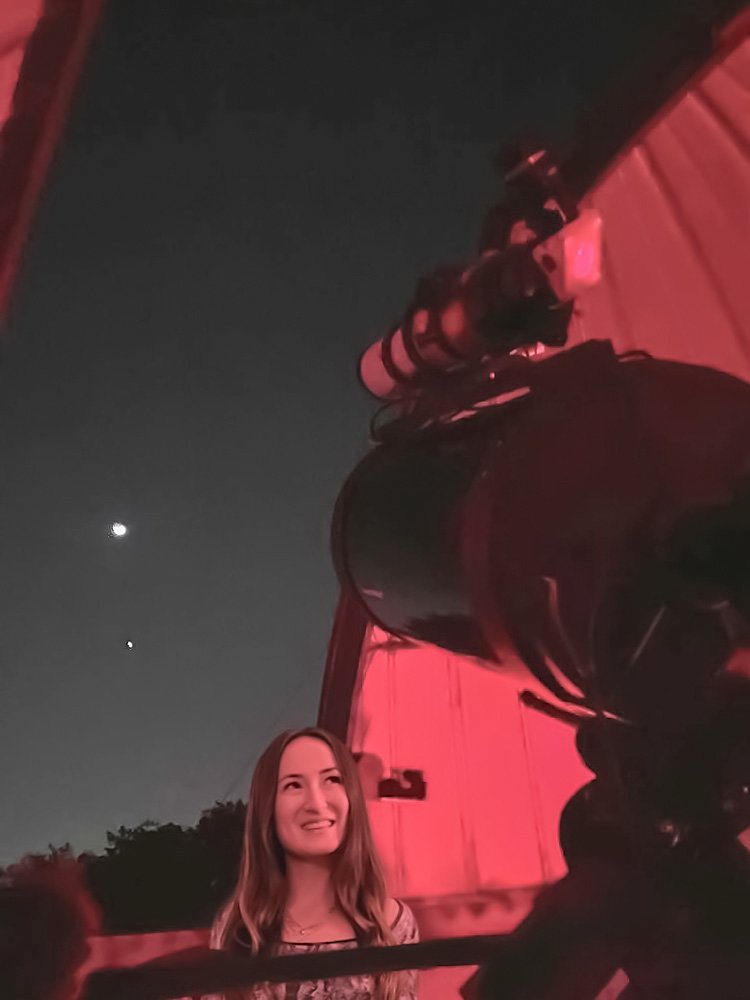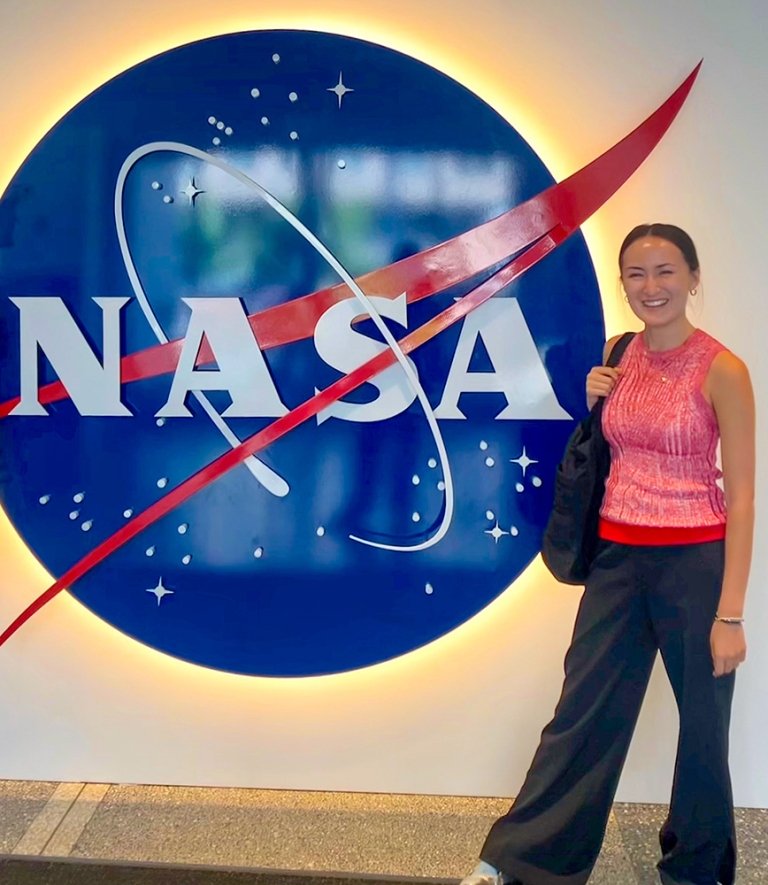Her Future is Star-Filled
Space policy intern Scotia Rollins ’25 explains her passion for planetary exploration
By Tom Johnson

Scotia Rollins ’25 admitted that she’s always liked working through ideas, albeit in a very meticulous way.
“I like creating a strong argument in favor of a point of view,” she said. As a Lloyd V. Berkner Space Policy intern at the National Academies of Science last summer, Rollins put into practice that view by fusing her physics major and philosophy minor into a combined skill set that she found was very invaluable to the panel and committee meetings that she attended during her 11-week gig.
The connection between philosophy and the hard science of space policy, at first glance, might seem counterintuitive, but Rollins said her philosophical studies allowed her to more easily write, compile, and report the information from meetings in a narrative form.
“When I took the class Techniques in Observational Astrophysics at Pitzer, my professor remarked how strong my writing ability was for our lab reports, and that encouraged me,” she said.
The goal of the internship, which is awarded twice each year, is to provide promising undergraduate and graduate students with the opportunity to work in civil space research policy in Washington, D.C. The Space Studies Board, with which Rollins worked, provides an authoritative forum for information and advice on all aspects of space science and serves as the focal point within the National Academies for activities on space research.
The board (which happens to be directed by Colleen Hartman, a Pomona College alumna) facilitates international research coordination and promotes communications on space science and science policy between the research community, the federal government, and the interested public. Rollins said that much of the work of the academy and the board culminates in decadal surveys—10-year plans that outline scientific missions and goals with input from scientists worldwide.
“It’s very possible at Pitzer to major in science but complement that with a humanities minor or major—the cross-disciplinary tolerance is very high at Pitzer and even encouraged. There’s an ease that might not exist at other colleges.”
—Scotia Rollins ’25
“Space policy, at its core, is about communication between agencies like NASA, the National Science Foundation, academia, and industry partners with a goal toward guiding the overall direction of science research,” she explained. “The reports themselves comprehensively cover specific areas: Astrophysics is one, planetary science is another, etc. And they provide recommendations for the upcoming decade. The research includes budgeting, allocations, and practical stuff to make it all happen.”

According to Rollins, the Berkner internship came about by happenstance. “It was very random,” she said. “I found it online, applied, and heard back a couple weeks later. I was mainly looking for summer research opportunities at universities in astronomy and astrophysics, and the internship was kind of an outlier.”
Her fascination with space began long ago and has always been an abiding interest.
“I became a physics major at Pitzer not necessarily with the intent of pursuing space-related research,” she said, “but I ended up taking astrophysics at Harvey Mudd and those classes encouraged me to look further into opportunities in the field of space.
“The physics department at Pitzer is small but extremely supportive,” she continued. “I don’t know if I would’ve been a physics major anywhere else. It’s been an enriching experience. And another thing: It’s very possible at Pitzer to major in science but complement that with a humanities minor or major—the cross-disciplinary tolerance is very high at Pitzer and even encouraged. There’s an ease that might not exist at other colleges.”

Rollins said she’s keeping her options open after commencement, but graduate school is “on the horizon” for her. Her biggest interest, spurred by her work in Washington, D.C., is in human space exploration.
“I’m currently writing a senior thesis on nuclear propulsion for the human exploration of Mars,” she said. “That was one of the biggest challenges. We don’t have propulsion systems that are powerful enough to send people to Mars, yet the goal is to have that mission happen around 2039.
“The payback for science is huge,” she added. “Understanding the geologic history of Mars is big, as is the possibility of encountering signs of life. The thing about sending humans instead of more robots is that people can do research on the surface of the planet in real time. Also, we want to understand how the Martian environment affects humans. Is it a place we could inhabit?”